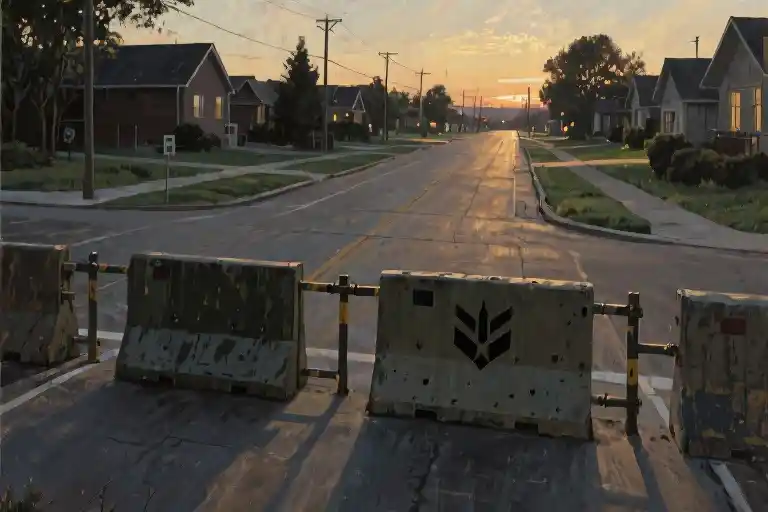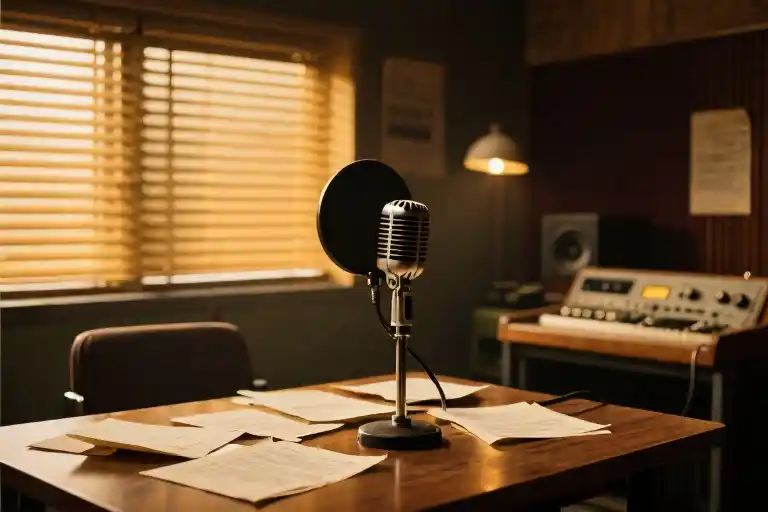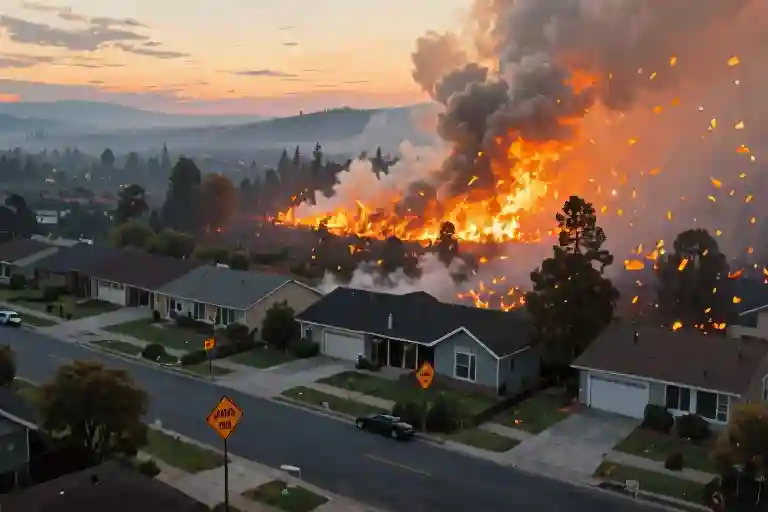The radio crackles to life with an emergency broadcast tone—that jarring electronic pulse you’ve only ever heard during monthly tests. But this time, the announcer’s voice carries a different weight. “By order of the President, martial law has been declared effective immediately in the following counties…” Your coffee mug freezes halfway to your lips as the neighborhood dogs begin barking in unison. Across the street, a car alarm starts wailing, though no one runs to silence it. This is how ordinary days unravel.
Martial law scenarios occupy that strange space between collective imagination and personal reality—something we’ve seen in movies but never truly believe will touch our lives. Yet here we are, with the kitchen radio announcing the suspension of normalcy. The first rule in these moments isn’t about stocking up or barricading doors (though we’ll get to that). It’s about recalibrating your nervous system. That adrenaline surge making your fingers tremble? That’s normal. The sudden dryness in your throat? Expected. Breathe through it. This is survivable.
Three immediate actions will anchor you when the ground feels unsteady:
- Silence your smartphone’s location services (find that quick settings menu now, before urgency clouds your thinking)
- Take mental inventory of your home’s supplies—water, batteries, medications—without rushing to stores yet
- Establish a family code word for verification if communications become spotty (something mundane like “Aunt Martha’s peach cobbler” that outsiders wouldn’t guess)
What makes martial law different from other emergencies isn’t just the presence of armed personnel—it’s the sudden rearrangement of social rules. The same street you jogged down yesterday might now have checkpoints. That friendly neighborhood cop could be replaced by a fatigued National Guardsman with different protocols. This transition period, typically the first 24-72 hours, demands particular awareness as authorities implement new systems while civilians adjust.
You’ll notice I haven’t mentioned protest strategies or debating constitutional nuances. Not because they’re unimportant, but because survival follows a hierarchy of needs. Right now, your prefrontal cortex is probably drowning in cortisol—that’s the part responsible for complex reasoning. We’ll address legal rights and long-term planning once we’ve secured your physical safety and stabilized your stress response. For this opening chapter, think of yourself as an emergency medic: triage the critical systems first.
Curiously enough, the most dangerous element during early martial law often isn’t the military presence itself—it’s the information vacuum. Within hours, your social media feeds will explode with contradictory reports, apocalyptic predictions, and well-meaning but unverified advice. This is when people make fatal errors, like rushing toward what they believe are “safe zones” that turn out to be conflict hotspots. The military term for this is “the fog of war,” and your best defense is disciplined information consumption.
Here’s what actually works: designate one battery-powered AM/FM radio (yes, the analog kind your grandparents used) as your primary news source during initial disruptions. Military and government agencies still prioritize these traditional channels when digital infrastructure becomes unreliable. The 162.400–162.550 MHz NOAA weather band often carries emergency updates too. As for digital sources, bookmark the .gov versions of local law enforcement sites now—not their .com or .org lookalikes that might emerge during crises.
If you take nothing else from this opening section, let it be this: martial law is a temporary suspension, not a permanent erasure. However frightening the headlines grow, however long the days feel, civil societies have weathered these periods before. Your grandparents lived through them. Your great-grandparents survived worse. This isn’t to minimize real dangers, but to provide perspective when panic whispers that the world is ending. It isn’t. You’ll adapt. And we’ll walk through each step together.
Immediate Response: The First 24 Hours Under Martial Law
The moment martial law is declared, time becomes your most precious resource. Streets that were familiar just hours ago now carry different rules, and ordinary routines transform into calculated decisions. This isn’t about panic—it’s about purposeful action.
Finding Reliable Information Channels
Official communication systems often become overloaded during initial announcements. Bookmark these primary sources before they’re needed:
- Government emergency broadcast frequencies (AM 1620 for U.S. Federal Emergency alerts)
- Municipal website mirrors (.gov alternatives hosted on foreign servers)
- Verified military public affairs Twitter accounts (@USArmyPAO for U.S. cases)
Secondary verification matters. Cross-reference all directives with at least two independent but trustworthy sources like:
- International news agencies with local bureaus (Reuters, AP)
- Neighborhood community networks (Nextdoor, Telegram groups with admin verification)
Time-Sensitive Action Plan
First Hour:
Silence becomes strategic. Turn off location services on all devices and disable voice assistants. Notify trusted contacts using predetermined code phrases—something as simple as “Grandma’s recipe worked” could confirm your safe status without drawing attention.
Three Hour Mark:
Assess your mobility window. If still at work when declaration occurs, choose routes avoiding government buildings, military installations, or protest hotspots. Public transportation often shuts down first—have walking shoes and cash (small denominations) ready.
Twelve Hour Critical Window:
Complete essential preparations before full restrictions activate:
- Fill every available container with water (bathtubs, clean trash bins)
- Withdraw cash in mixed denominations (ATMs may freeze accounts)
- Photograph important documents and upload to encrypted cloud storage
High-Risk Behaviors to Avoid
That instinct to document everything could backfire. Military checkpoints don’t appreciate camera phones. Remember:
- No photographs of security personnel or installations
- Avoid congregating in groups larger than three people
- Delete protest-related content from social media histories
Smartphones become liability devices during martial law. Consider downgrading to a basic prepaid phone for essential communications, or at minimum, enable airplane mode when not actively using verified secure apps.
Street smarts shift too. That baseball cap with your favorite team’s logo? It makes you more recognizable in surveillance footage. Those noise-canceling headphones? They prevent you from hearing approaching patrols. Adapt your wardrobe and habits to blend into the new normal.
What many forget in those first chaotic hours is that martial law declarations often come with grace periods—brief windows where movement is still possible before full restrictions lock down. Use this time wisely, not frantically. The neighbor rushing to buy all the bottled water creates unnecessary attention; the person quietly filling reusable containers draws none.
Light discipline matters after dark. Heavy curtains or blackout materials prevent light leaks that might indicate occupancy during curfews. This isn’t paranoia—it’s about eliminating unnecessary risk factors when the rules of daily life have fundamentally changed.
Securing Your Home and Supplies During Martial Law
When the streets fall quiet under martial law, your home becomes both sanctuary and stronghold. The sudden absence of normalcy demands practical adjustments – not panic, but purposeful preparation. Let’s walk through what actually matters when securing your daily existence.
Building Your Supply Foundation
Start with the non-negotiables: water, food, and light. Store three gallons per person daily – not just for drinking but sanitation. Those decorative ceramic pots in your garden? They’re now emergency water containers. Rotate canned goods with pull-top lids (no can opener required) and prioritize calorie-dense nuts over perishables. That camping headlamp buried in your garage becomes essential when curfews limit movement after dark.
Medications require special attention. Pharmacies may operate intermittently, so maintain a 90-day supply of prescriptions. Include basic antibiotics like amoxicillin if accessible, and don’t overlook over-the-counter essentials – antidiarrheals become lifesavers when water quality falters.
The Security Mindset
Home protection begins with perception management. During daylight hours, maintain appearances – curtains partially open, a single light cycling on/off to simulate normal occupancy. At night, blackout conditions prevent visibility into your sanctuary. That decorative trellis? Reinforce it as a barrier for ground-floor windows.
Electronic vulnerabilities often get overlooked. Faraday cages (even simple cookie tins lined with cardboard) can shield spare phones and radios from EMP risks. Designate one device for limited external communication, keeping others in reserve. Remember – your smart doorbell now serves as a security camera; disable its internet connectivity to prevent surveillance.
Lessons from Myanmar’s Streets
During Myanmar’s 2021 military takeover, ordinary households developed ingenious adaptations. Neighborhoods organized silent alert systems – specific curtain patterns signaling danger, children’s chalk drawings indicating safe houses. One Yangon family survived months by creating hidden compartments in floorboards for rice storage and converting their rainwater collection system into an emergency supply.
Their experience teaches us that community matters more than stockpiles. Establish trusted networks now – the elderly neighbor who needs medication checks, the nurse down the street who can suture wounds. These bonds create invisible safety nets when formal systems collapse.
Maintaining Normalcy Within Walls
Psychological resilience stems from routine. Designate areas for specific activities – a corner for news monitoring (limit to 30 minutes twice daily), a table for meal preparation, a space for physical exercise. This structure prevents the mental erosion that comes with prolonged confinement.
Those board games gathering dust? They’re now vital tools for maintaining family morale. The guitar you never learned to play becomes a stress-reliever. Martial law’s peculiar gift is the rediscovery of analog pleasures in a digital world.
Security isn’t about fear – it’s about thoughtful anticipation. By methodically addressing these practical concerns, you create space to handle the psychological challenges that inevitably accompany restricted living. The goal isn’t to build a fortress, but to craft a sustainable existence until ordinary life resumes.
Understanding Your Rights During Martial Law
The declaration of martial law creates a legal twilight zone where normal rules seem suspended but fundamental protections still exist. This strange duality requires careful navigation – knowing when compliance becomes self-preservation and where the invisible lines of military authority actually lie.
Military power isn’t absolute, even under martial law. The Posse Comitatus Act in the United States, for example, maintains barriers against using the military for domestic policing without congressional approval. Similar legal firewalls exist in other democracies, often rooted in constitutional provisions about due process and unlawful detention. These become your silent allies when facing overreach.
When stopped for questioning, your response matters more than you might think. A simple template works in most situations: \”I want to cooperate fully, officer. For both our protections, may I see the written order authorizing this checkpoint?\” This achieves three things – shows compliance, requests documentation, and establishes a record. Keep hands visible, avoid sudden movements, and maintain neutral facial expressions throughout the interaction.
Documentation becomes your most powerful tool when rights violations occur. Modern technology offers discreet options – smartphone apps that automatically upload footage to cloud storage when facial recognition detects military uniforms, or voice recorders activated by specific vibration patterns (like helicopter rotor sounds). One Myanmar protester in 2021 used a modified fitness tracker to log every interrogation location via GPS while appearing to cooperate fully.
Important documents need special protection strategies. Scan passports, property deeds, and medical records, then encrypt the files with a service like VeraCrypt. Store the decryption key as a series of handwritten numbers in an ordinary shopping list – the third digit of each price represents part of the key. This avoids digital trails while keeping vital information accessible.
Legal boundaries vary significantly by region:
- North America/EU: Military cannot typically conduct trials of civilians unless civilian courts are completely nonfunctional
- Southeast Asia: Broader detention powers but often require periodic judicial review
- Middle East: Religious institutions frequently maintain independent legal authority even during martial law
The Geneva Convention’s Article 3 provides universal minimum protections – humane treatment, no torture, basic medical care. Even the strictest martial law declarations must respect these standards. Memorizing this fact can become psychological armor during difficult moments.
Remember this hierarchy when facing demands:
- Immediate physical safety always comes first
- Document everything possible without risking #1
- Seek legal recourse only after the immediate danger passes
A family in Kyiv during the 2022 conflict used color-coded window curtains to silently communicate with neighbors – blue for “safe to approach,” red for “armed patrol nearby.” These small innovations create pockets of normalcy while respecting the reality of military control.
The most overlooked right? Human dignity. However bleak the situation, you retain the power to control small things – how you stand, when you make eye contact, whether you offer a glass of water to an exhausted soldier. These moments often determine whether an interaction escalates or concludes peacefully.
Mental Resilience and Long-Term Strategies
When the initial shock of martial law declaration fades, what remains is the psychological marathon. The mind can become both your greatest ally and most dangerous enemy during prolonged restrictions. This isn’t about dramatic survival scenarios, but rather the quiet art of maintaining sanity when daily rhythms disappear.
Breathing Through the Panic
Simple physiological tools often prove most effective. The 4-7-8 breathing method (inhale for 4 counts, hold for 7, exhale for 8) disrupts the fight-or-flight response better than any pep talk. Keep a physical notebook for ‘worry dumps’ – brief timed sessions to vent anxieties before closing the page. Information diets become crucial; designate specific times to check updates rather than compulsive refreshing that fuels anxiety spirals.
The Unexpected Power of Routine
Even under martial law, the human brain craves predictability. Create anchor points in your day: morning stretches using a chair if space is limited, scheduled family check-ins using predetermined code phrases (‘Aunt Martha’s recipe’ could mean ‘all safe’). These micro-rituals build psychological scaffolding when external structures collapse.
Building Community Without Gathering
Neighborhood networks adapt surprisingly well under constraints. Establish rotating ‘window watch’ systems where households monitor different directions at set times. Develop simple visual signals – a particular curtain arrangement or potted plant position can communicate safety statuses to those nearby. For families with children, coordinate educational activities through shared books left in designated safe spots, sterilized between uses.
The Digital Tightrope
While official communication channels may be monitored, encrypted messaging apps with pre-arranged groups provide lifelines. Agree on innocuous phrases that carry layered meanings (‘The roses need watering’ might indicate military patrols in the area). But remember – digital breadcrumbs can endanger others. Always assume any electronic communication could be intercepted.
When Restrictions Lift
The transition back carries its own psychological hazards. Survivor’s guilt manifests in unexpected ways – reluctance to remove home fortifications, or irritation at others’ rapid return to normalcy. Gradually reintroduce previously restricted activities rather than rushing headlong. Document experiences soon after events while memories remain fresh; these accounts may help both personal processing and historical record.
The Long Game
Martial law’s true test often comes after its official end. Sleep disturbances and hypervigilance may persist. Simple grounding techniques help: focus on identifying five visible objects, four touchable textures, three audible sounds. If resources allow, create a ‘recovery capsule’ with small comforts (a favorite book, family photos) to mark the psychological transition when possible.
What nobody mentions about enduring such periods is the bizarre nostalgia that eventually comes. Years later, you might find yourself missing the intensity of purpose those constrained days demanded. This doesn’t romanticize hardship, but acknowledges our remarkable capacity to find meaning even in confinement. The ultimate survival skill isn’t stockpiling or evasion techniques, but preserving the quiet belief that tomorrow’s sun will look different than today’s.
Closing Thoughts: Beyond the Crisis
The declaration of martial law creates a surreal pause in ordinary life – streets emptied of their usual rhythms, conversations hushed behind closed doors, the weight of uncertainty pressing against every decision. Yet history reminds us these measures are temporary, no matter how interminable they may feel in the moment. The curfews will lift, the checkpoints will disappear, and ordinary freedoms will gradually return. What matters now is ensuring you’re there to see that day.
This survival guide isn’t about politics or protest; it’s about preserving the simple human right to wake up tomorrow. The downloadable quick-reference checklist consolidates our most critical advice – consider keeping both digital and printed copies in multiple secure locations. Share it discreetly with neighbors who might need assistance, particularly elderly residents or single parents. Community bonds often determine who weathers these storms with least trauma.
Your experiences during this period hold value beyond the immediate crisis. When safe to do so, document your observations – not just dramatic events, but the small adaptations that kept your household functioning. These personal accounts help future generations understand how ordinary people navigate extraordinary circumstances. If willing, consider contributing anonymized notes to humanitarian archives studying civil emergency responses.
Three truths to carry forward:
- Temporary doesn’t mean brief – Prepare mentally for weeks or months, not days
- Silence isn’t surrender – Strategic compliance creates space for long-term recovery
- Memory is resistance – Preserving truth matters when narratives get contested
The greatest rebellion now is simple endurance – keeping yourself and others whole until morning comes. However dark the night, remember: no government controls the sunrise.



